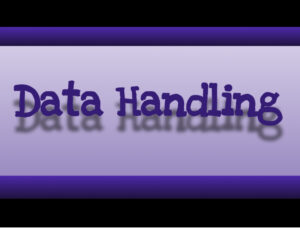Practical Measurement
Practical work in Maths is always a hit! And what better reason to do practical measurement than in tackling an investigation.
Measurement investigations provide enormous scope for mathematical skill building:
- using measuring equipment correctly and measuring accurately
- understanding and minimising sources of error
- dealing with different people getting different results – leading to discussions on: averaging, different kinds of averages & which are appropriate when; rounding & appropriate degrees of approximation
- converting between metric measurements
- recording of measurements using diagrams
- calculations using decimals (either written or using a calculator) and appropriate ways of recording these
- step-by-step written explanations of thinking.
The three investigations here touch on: symmetry; compass points; the 24 hour clock; metric measurements for length, volume and capacity; addition, subtraction, multiplication and division with decimals; similar triangles and ratio.
How Tall is that Building?
An outdoor team challenge to estimate the height of a building, either by counting bricks, using shadows or using similar triangles. Covers skills in estimating, measuring, minimising errors and...
How Much Snow Would Fill the Classroom?
Estimate distances, work with volume of cuboids, convert metric volumes - cm3 - litre - m3, measure with metre sticks, minimise sources of error, average using the median, draw diagrams, round...
Shadow Clocks
Investigate how the length and direction of a shadow change during the course of a day. Learn about compass directions, symmetry, practical measurement using a metre stick, time (am/pm) and use of a...
Numbers and Data
Most numbers in the real world are big. If not big, then they are decimals. Some children find these scary!
The simple solution is to let the children work first with easy numbers (‘try a simpler case’), work out what to do, and then do the same thing with the trickier numbers using a calculator if necessary.
Both these investigations illustrate this approach and involve tricky real-world numbers.
Here are the skills you can build this time…
- finding and recording information in a table
- reading, rounding, ordering, adding and subtracting large numbers
- showing the relationship between two amounts as a fraction
- converting fractions to percentages
- rounding calculator answers appropriately
- creating correctly labelled bar or column graphs with an appropriate scale
- calculating the angles for different sections in a pie chart
- drawing angles correctly, using a protractor.
Populations
Investigate the populations of towns or countries and learn how to work out how many more people live in one town than another and how many times bigger one town is compared with another....
Election Results
Compare the results of a recent election with a previous one and present findings using a hand drawn pie chart. Covers the skills of expressing quantities as percentages and calculating pie chart...
Maps, Distances and Travel
A study of a local area, or of a journey, can provide a super context for learning about Scale. Using real maps provides real motivation.
Don’t restrict yourself to easy numbers! There is no reason that the children cannot work with real-world large numbers or decimals if they understand the context. If you show them how to use conversion tables they will easily grasp how to build up from simple numbers to harder ones.
If you throw in timetables as well then you can cover all the following skills:
- reading timetables
- calculating time intervals
- measuring small distances accurately
- converting between different metric measurements
- rounding numbers
- using scale to calculate real distances from map distances
- finding averages
- calculating speeds.
Flights
An investigation into flight times for an aeroplane between different places. Covers map scales, averages, conversion tables and speeds.
How Far is it Round the World?
Create a table relating distances on a globe to distances in real life and then use this to calculate distances between places around the world. Covers concepts in measurement, averaging to minimise...
Maps and Scales
Find real life distances from measured distances on a map. Learn practical measurement skills for straight or curved distances. Practise estimating, finding averages and using conversion tables to...
How Many Hula Hoops?
How many hula hoops (the small, crunchy variety!) would it take to stretch from the school to Big Ben in London? Investigate metres, converting to km, using conversion tables and working with BIG...
Train Journey
Investigate how to use train timetables, calculate journey times, interpret maps, measure distances, use averages and work with scale. Create an information booklet about a forthcoming train...

























